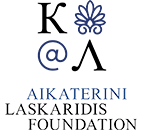Ionia (222 Subjects)
Ancient coins from Tmolus (1), Izmir and Hierapolis (2), Milas (3, 4), coin of emperor Gallienus from Metropolis in Ionia (5), Colophon (6), coin of emperor Caracalla from Lebedus and Nicaea (7, 8).
A Roman gate at Ephesus. In the distance the castle of Selçuk, the city adjacent to ancient Ephesus.
Boustrophedon inscription, recorded by William Gell, from the throne of a statue at the Sacred Way of Didyma, the road leading from the Temple of Apollo to the sea. Inscription from a helmet at Olympia, votive offering of the city of Syracuse. William Leake cites the latter inscription to show how in Doric inscripions vowel crasis is employed so that inscriptions can end in dactylic hexameter.
Comparison of plans of ancient temples as to their size: The temple of Artemis at Ephesus (1), the Heraion of Samos (2), the sanctuary of Apollo at Didyma (3), the temple of Artemis at Sardes (4), the temple of Artemis Leucophryene at Magnesia on the Maeander (5), the temple of Dionysus at Teos (6), the temple of Athena Polias at Priene (7), in Ionic order. The temples of Agrigento (1) and Selinunte (2) in Doric order, the temple of Olympian Zeus at Athens (Corinthian order) and the Parthenon (Doric order).
Greek and Jewish women in traditional costume. View of Stroboli volcano. Lighthouse at the bay of Messina, Sicily. View of Izmir.































